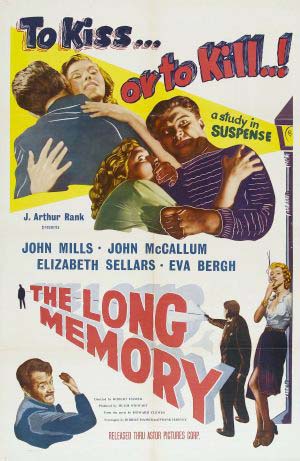
The Long Memory (1952)
|
Home..............Paintings...........Sculpture.............Hybrid Photography.............Experimental Films...........Straight Film Pinewood.........Alien.........Other Films.......NFTS.......Scenic Work.........Arkadon........Biography Falmouth School of Art.......Mosaics.......Stardust
|
Hell Drivers (1957) - Man in the Moon (1960) - Mystery Film Sets - Pinewood - Miranda (1948) Atmospheric Sets - The Woman for Joe (1955) - Floods of Fear (1959) - The Card (1952) |
|---|

The Long Memory - 1952 | 96 mins | Drama, Thriller | B&WThe Production TeamDirector: Robert Hamer. Producer: Hugh Stewart. Script: Robert Hamer and Frank Harvey. (from the novel by Howard Clewes) Cinematography: Harry Waxman. Editing: Gordon Hales. Art Direction: Alex Vetchinsky. Costume Design: Joan Ellacott. Make-up Department: George Blackler. Sound: Gordon K. McCallum, Winston Ryder and C.C. Stevens. Original Music: William Alwyn. The CastJohn Mills - Phillip Davidson
John McCallum - Superintendent Bob Lowther Elizabeth Sellars - Fay Lowther Eva Bergh - Ilse Geoffrey Keen - Craig Michael Martin - Harvey Jackson John Chandos - Boyd John Slater - Pewsey Thora Hird - Mrs. Pewsley Vida Hope - Alice Gedge |
Phillip Davidson (John Mills) has just been released from prison, having served twelve years for murder. An early flashback establishes that he had been wrongfully convicted, and that the false testimony of his then fiancee (Elizabeth Sellars) played a significant part in securing that conviction. In a neat twist, it also transpires that the treacherous fiancee has, in the intervening years, married the policeman originally in charge of Davidson’s case (John McCallum). Aware of the fact that Davidson still bears a grudge, the authorities track him Kent where he takes up residence in an abandoned barge along the desolate Thames estuary. As Davidson grimly sets about the task of seeking out his former tormentors the action alternates between his search and the slow unravelling of the idyllic domesticity of the policeman’s life. Running parallel to this is the development of a relationship between Davidson and a refugee girl (Eva Bergh) working as a waitress in a dingy cafe. This plot thread is not mere romantic padding but an essential element that clearly demonstrates just how deep Davidson’s scars run. By the end of the movie the quest for revenge has transformed into more of a journey towards spiritual redemption. |
 |
|---|
| Most of these production shots come from 2 1/4 square negatives as this was the common format for location hunting in the Fifties. This selection shows how London used to be after the war. St. Paul's Cathedral and St. Vedast alias Foster to the right just about survived. Photo taken fron Gresham Street. |
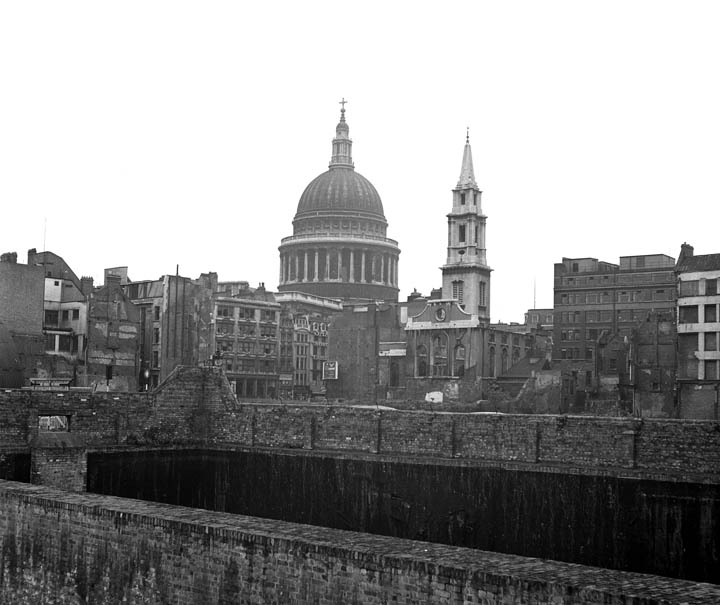 |
| Horselydown Lane |
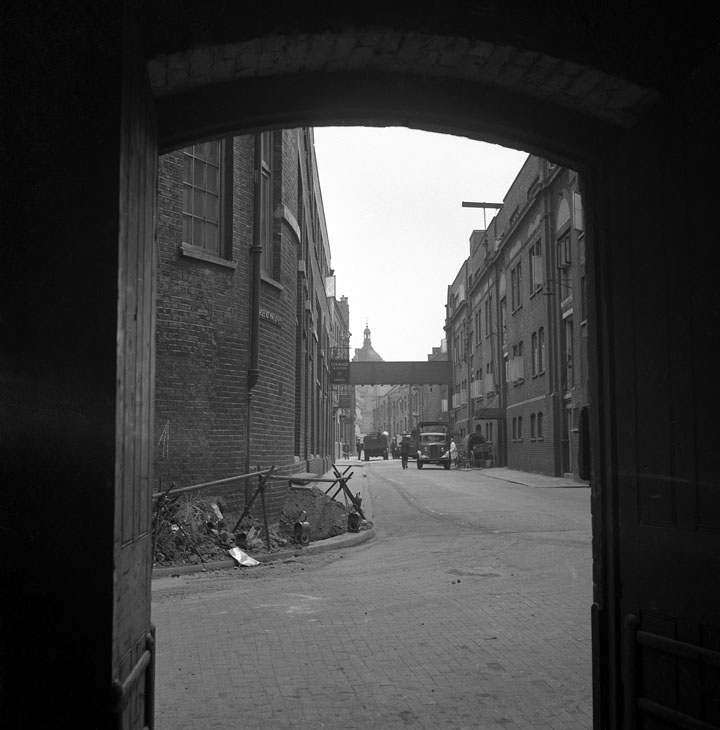 |
St Olave Jewry Church from Cheapside |
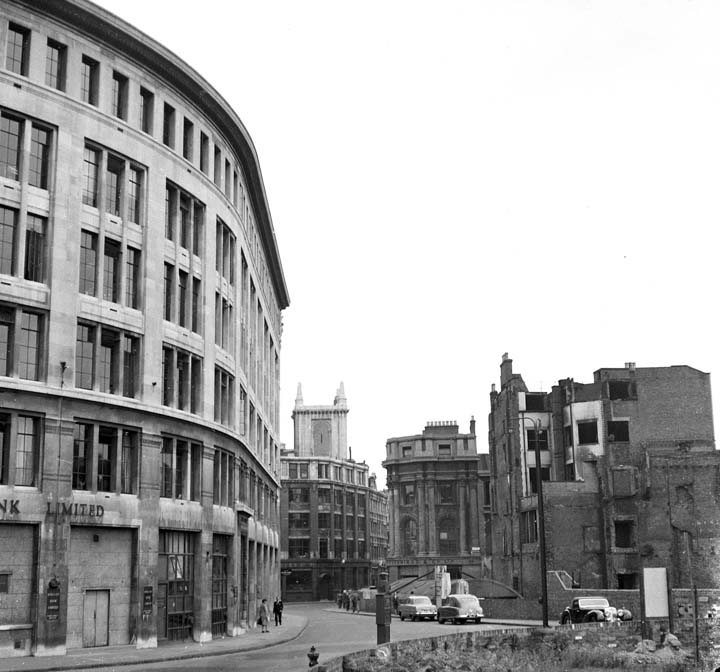 |
| St. Alban Church, Wood Street - only the tower survives today. Taken from Aldermanbury Square. |
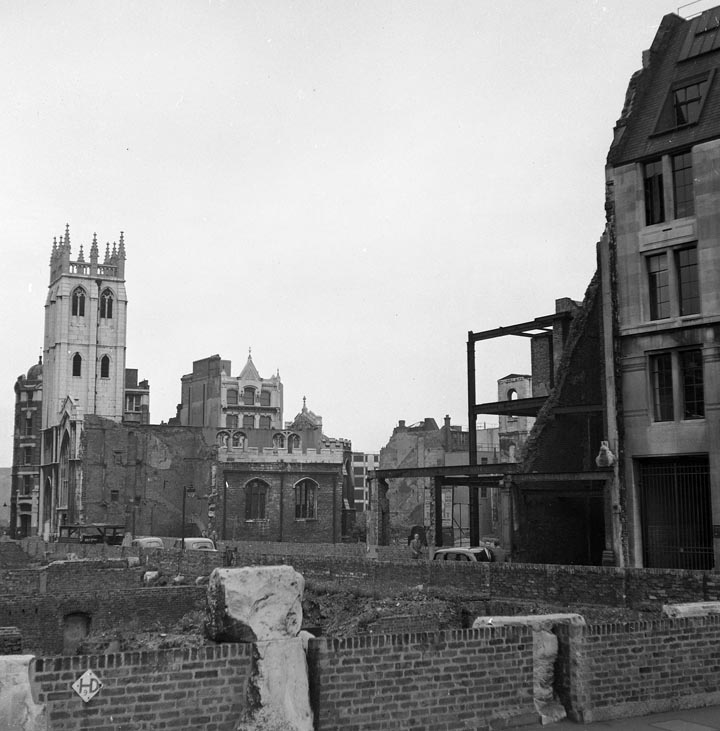 |
| St. Alban Church |
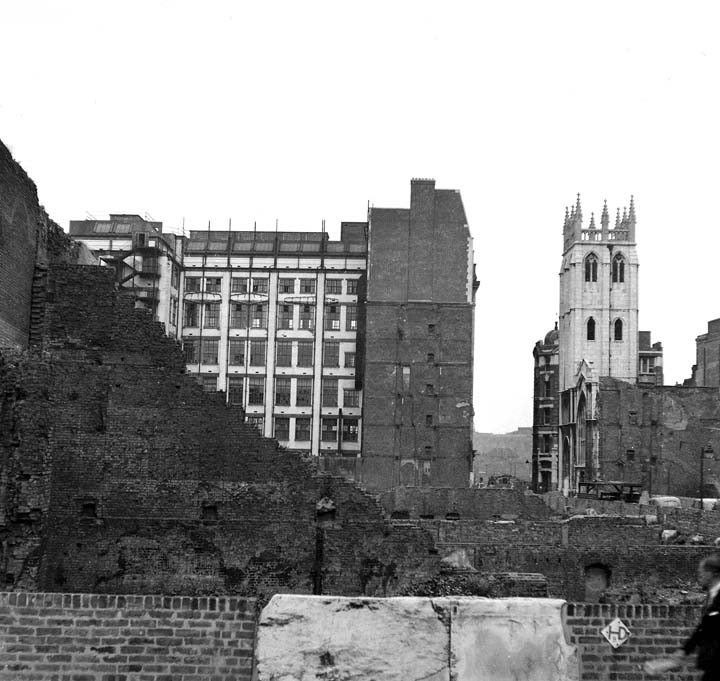 |
| Tower Bridge with cranes from St. Katherine Docks. |
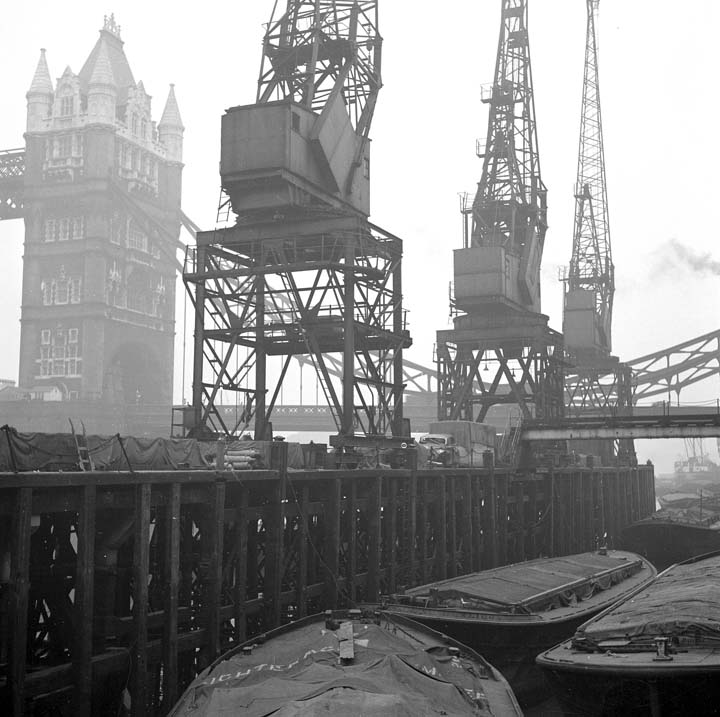 |
| Barges unloading at St. Katherine Docks |
 |
| Behind the Docks. |
 |
| View of St. Katherine Docks next to Tower Bridge. The General Steam Navigation Company in the background. |
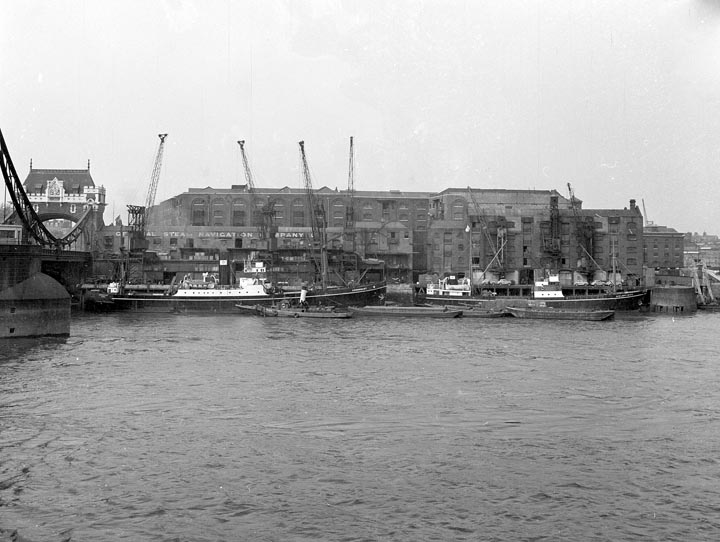 |
| Barges at Gravesend. |
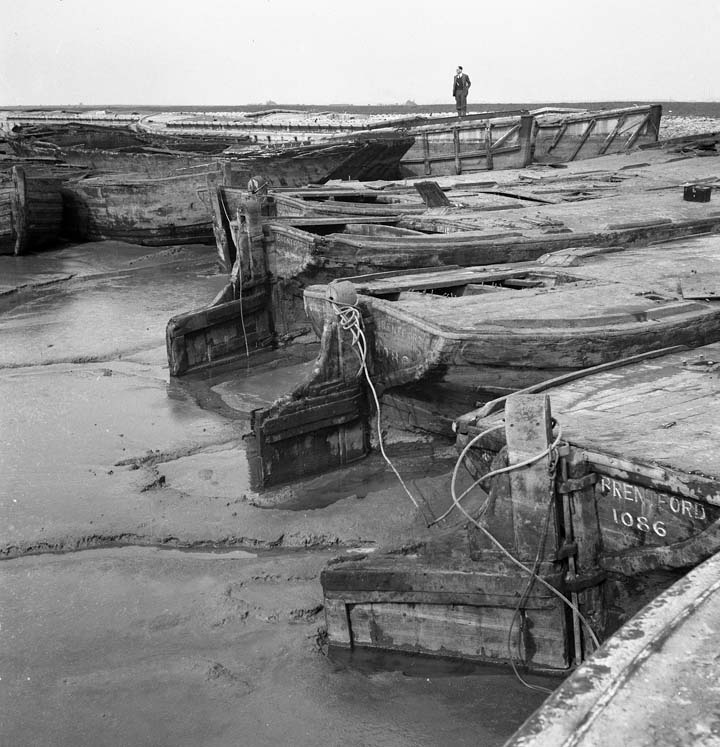 |
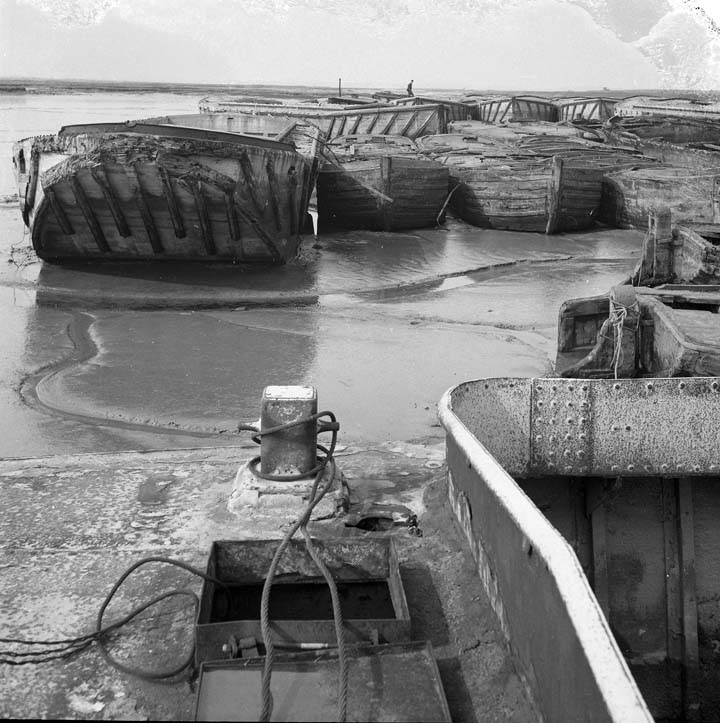 |
| Interior of Jackson's hut, a kindly old hermit from whom he rents the barge |
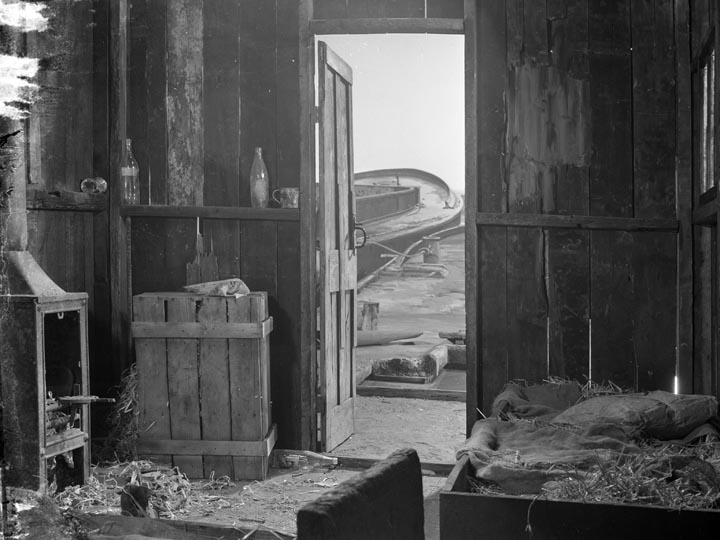 |
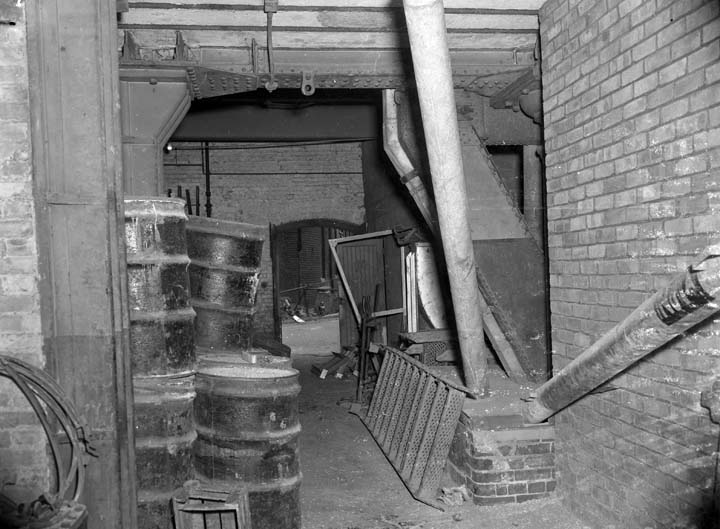 |
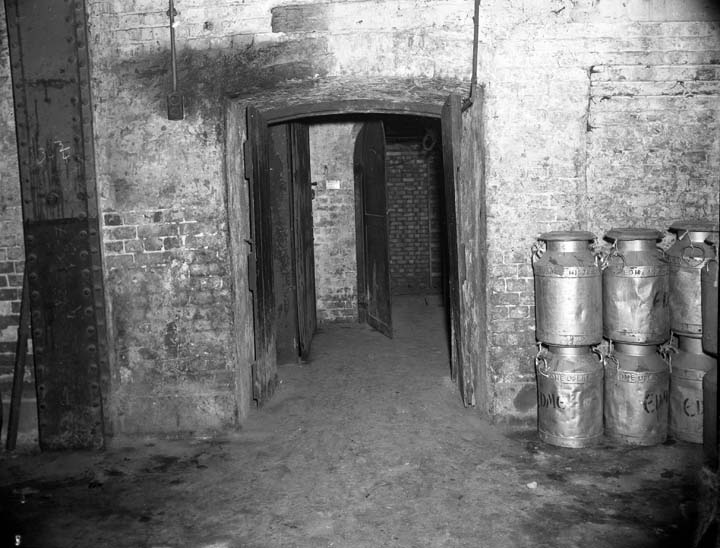 |
| Interior of rundown beach cafe |
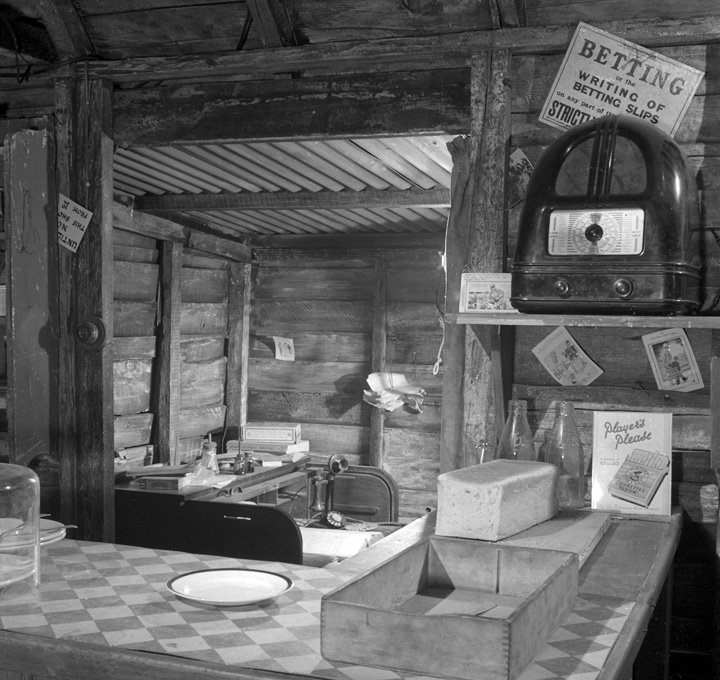 |
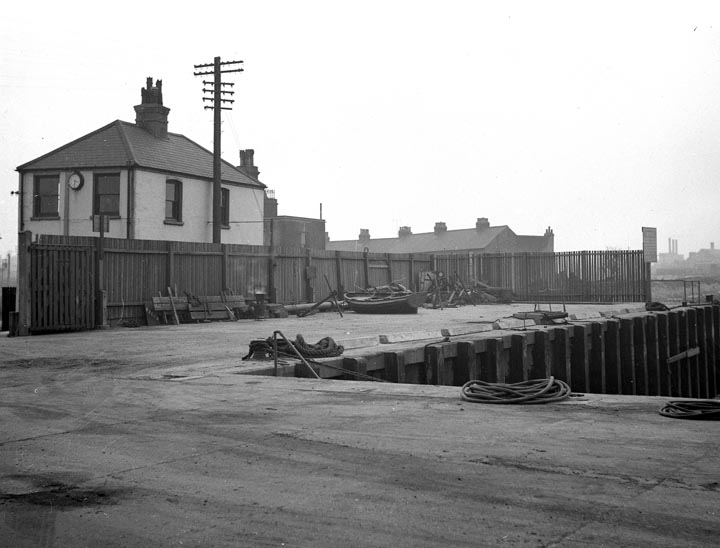 |
SynopsisThe protagonist, Davidson (Mills), visits the boat of Captain Driver to ask permission to marry his daughter Fay. Aboard, he finds himself involved in a fight over the criminal activities of Boyd, a people trafficker with whom the Drivers are associated. The boat catches fire, and subsequent investigation finds aboard a charred corpse, Boyd having gone missing. The corpse is actually a client Boyd killed, but to cover up their involvement, the Drivers and another associate, Tim Pewsey, perjure themselves by claiming there was no other man present. This leads to the identification of the corpse as Boyd and to Davidson's conviction for his murder. He spends 12 years in prison. Upon his release, he sets out to get even with the three witnesses. Living rough in a beached barge on the Kent Marshes, he returns to the scene of the crime and begins gathering clues as to the whereabouts of the witnesses. He finds that Captain Driver has drunk himself to death, Pewsey is a confused wreck, and Fay is now married to a policeman, Inspector Lowther (John McCallum), who has spent the past dozen years mulling over the case, wondering if Davidson might indeed be innocent. Three people attempt unsuccessfully to befriend Davidson: Jackson, a kindly old hermit from whom he rents the barge; Ilse, a traumatised refugee who falls in love with him after he rescues her from being raped by a sailor and allows her to stay overnight on his barge; and Craig, a journalist who is interested in his case and also suspects him to be innocent. Shadowed by Lowther, whose own marriage is coming under increasing tension with the possibility of his wife's perjury, Davidson stalks Pewsey to frighten him into confessing to the police, and also discovers that the alleged murder victim, Boyd, is alive and well. He visits Boyd's office and confronts him, but is shot and finds himself pursued by Boyd and his criminal chauffeur. He flees to the Kent Marshes, where he is saved during a final confrontation when Boyd, about to kill him, is shot by Jackson. The film concludes with Ilse and Davidson refusing further help, leaving to deal with their pasts together. |
Hell Drivers (1957) - Man in the Moon (1960) - Mystery Film Sets - Pinewood - Miranda (1948) Atmospheric Sets - The Woman for Joe (1955) - Floods of Fear (1959) - The Card (1952) |